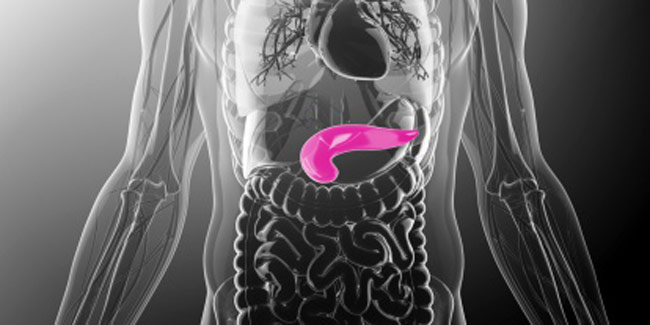
The pancreas is a complex organ that has dual roles in our body. First, it is an organ of our digestive system and secondly it is also a part of the hormonal system, also called the endocrine system. It plays a vital role in generating energy that our body needs for its functioning. It is a crucial organ whose disorders may result in acute or chronic pancreatitis, pancreatic cancer and diabetes.
Table of Content:-

The pancreas plays a vital role in the digestive system by converting food into fuel or energy for our body. Once the food has been partially digested by the stomach, it is pushed into the opening of the small intestine, also called the duodenum. It is here that the pancreas plays its role in the digestive system. The pancreas is connected to the duodenum via a small duct. Once the partially digested food reaches the duodenum, the pancreas adds its own juices and enzymes to the food through that small duct.
The pancreas also produces the hormone insulin, which helps to control the amount of sugar in the blood. Both the functions of pancreas are very crucial for normal body functioning.
The Location
The pancreas is a 25 cm long tadpole shaped organ which is located in the abdomen, closely tucked behind the stomach. It is fat at one end and slender at the other. The fat end is positioned towards the center of the abdomen while the thin end extends to the left. The middle section is called the neck and the body of the pancreas. Several major blood vessels surround the pancreas; these include the superior mesenteric artery, the superior mesenteric vein, the portal vein and the celiac axis. They supply blood to the pancreas and other abdominal organs.

The Exocrine Function
The pancreas contains exocrine glands which plays a vital role in our digestive system. The exocrine gland produces enzymes that are important for digestion. When the partially digested food enters the stomach, these pancreatic juices are released into a system of ducts. Of these ducts the pancreatic duct joins the common bile duct to form the ampulla of Vater located at the duodenum, the opening portion of the small intestine. The common bile duct originates in the liver and the gallbladder that produces the bile juice which is also very important for digestion. The pancreatic juices and bile released together into the duodenum help the body digest fats, carbohydrates, and proteins to generate energy for the cells of the body. It is the pancreas that helps our body gets its fuel out of the food we eat.
If the exocrine portion of the pancreas is inflamed then the compromised tissue releases these enzymes from the ducts which in return begin to auto digest the tissue itself. This condition is called Pancreatitis which may lead to severe abdominal pain, vomiting and even diarrhea. Repeated pancreatitis can also lead to pancreatic insufficiency where the pancreas fails to make enough of the digestive enzymes. This condition results in a malabsorbtion of fats and proteins from the food, leading to chronic weight loss.
The Endocrine Function
The endocrine component of the pancreas consists of islet cells that create and release important hormones directly into the bloodstream. Two of the main pancreatic hormones are insulin, which acts to lower blood sugar, and glucagon, which acts to raise blood sugar. Maintaining proper blood sugar levels is crucial to the functioning of key organs including the brain, liver, and kidneys.

Since the pancreas produce the insulin required to regulate the glucose levels in the body, improper endocrine functioning of the pancreas may result in diabetes. Without the necessary amounts of insulin, the body is unable to utilize the necessary glucose from the food. As a result the glucose stays in the bloodstream and is unable to reach the cells to be used as energy. All of it results in glucose imbalance and eventually diabetes. Therefore, pancreas is among the most important organs of our body.
How we keep this article up to date:
We work with experts and keep a close eye on the latest in health and wellness. Whenever there is a new research or helpful information, we update our articles with accurate and useful advice.
Current Version